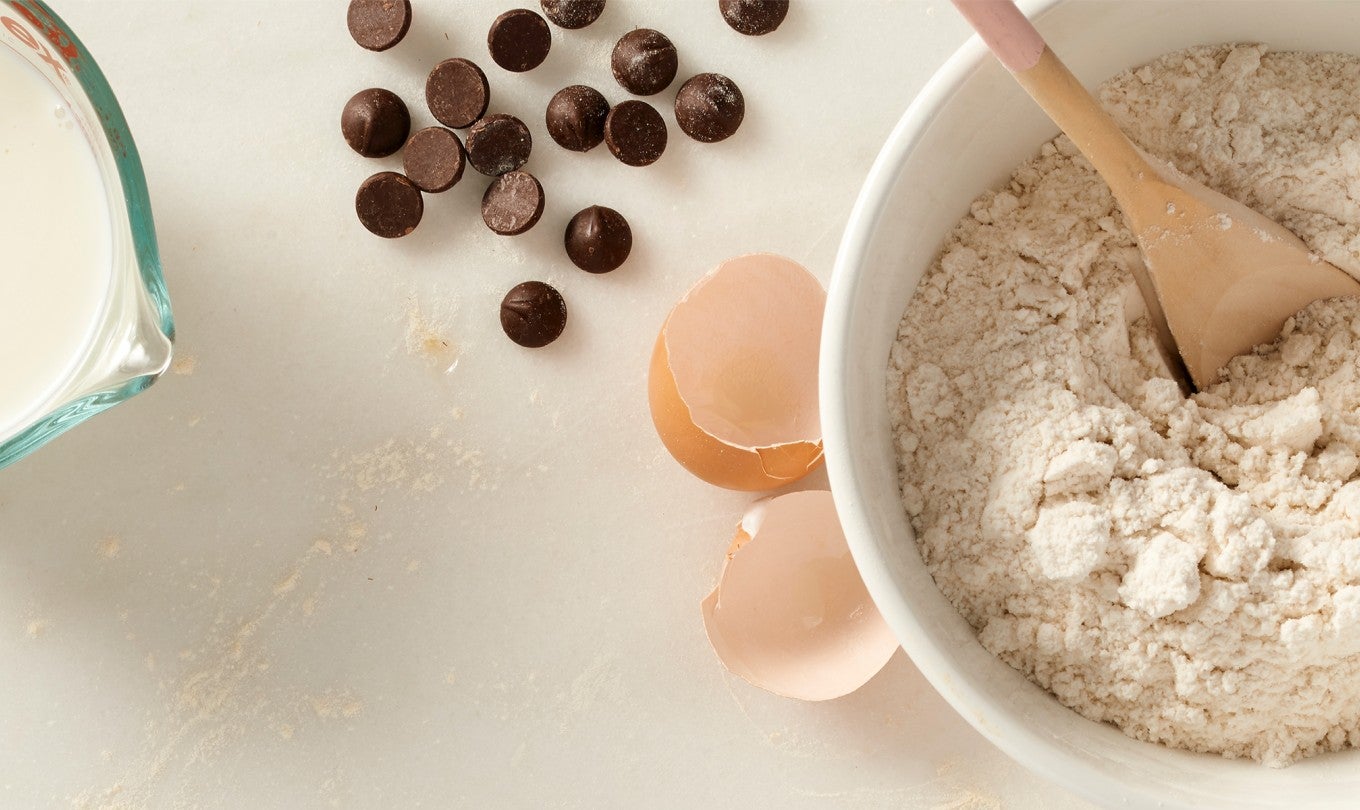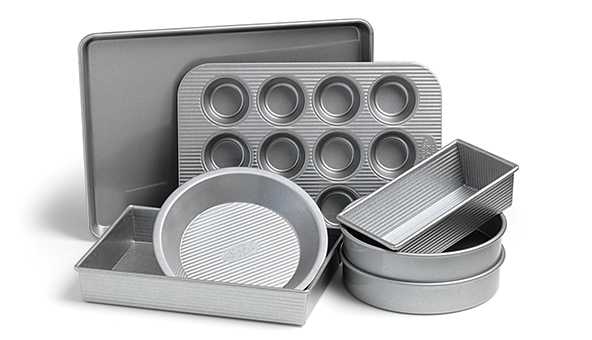
Recipe Success Guide
What to know before you start.Measurement standards
If you have a scale: Use it. All King Arthur recipes include both American and metric (gram) weights, as well as volume. If you're following one of your own favorite recipes (without listed weights), use our handy Ingredient Weight Chart. One cup of King Arthur Unbleached All-Purpose Flour weighs 4 1/4 ounces (120g).
If you don't have a scale: Here's how to measure by volume.
- For dry ingredients: Use a dry measuring cup. Usually made of metal, not glass, it won't have a spout, nor graduated measurements on the sides. Spoon dry ingredients gently into the cup. Sweep off any excess.
- For liquid ingredients: Use a liquid measuring cup. Usually made of glass or clear acrylic, it'll have a spout, and show graduated measurements on the sides. Fill cup to the measurement line desired. For best accuracy, read cup at eye level.
For best results…
Follow the recipe as written, using the ingredients, techniques, and pan size called for. Substitutions or omissions may affect the quality of your results.
Ingredient standards
Unless otherwise specified:
- Large eggs
- White sugar: granulated cane (not beet sugar)
- Brown sugar: dark or light
- Butter: unsalted American-style (not European)
- Milk: whole, 2%, 1%, or skim
- Salt: table salt
- Cocoa powder: unsweetened; either natural or Dutch process
- Vegetable oil: a neutral flavored oil like canola, sunflower, safflower, or a blend
- Buttermilk: full-fat, reduced-fat, low-fat, or nonfat
- Heavy cream or whipping cream: at least 30% milk fat
- Baking powder: double acting
- Yogurt: traditional or Greek-style, low-fat or full-fat
- Sour cream: low-fat or full-fat
- Light cream, half & half: interchangeable
- Black pepper: finely ground, unless the recipe calls for "coarsely ground"

Temperature standards:
- Lukewarm: 98°F to 110°F
- Room temperature: 68°F to 75°F
- Cool room temperature: 60°F to 67°F
Egg temperature: If the recipe calls for room-temperature eggs and yours are cold from the fridge, place them in a bowl of hot tap water for 10 minutes before using.
Butter temperature, salted/unsalted butter: If the recipe calls for room-temperature butter and yours is cold from the fridge, place wrapped stick in a bowl of barely warm (73°F) tap water for 10 to 15 minutes before using.
If recipe calls for unsalted butter and you're using salted, reduce the added salt in the recipe by 1/4 teaspoon for every 8 tablespoons of butter used.
Salt: For best results, use a standard-grain (table) salt; large-grain kosher and coarse-grain sea salt measure differently than table salt.
Yogurt: You may wonder, why don't we call for nonfat yogurt or sour cream? Because compared to milk/buttermilk, these ingredients are regularly used for the fat they add. Going down to "light" or low-fat is enough compromise; going nonfat pretty severely affects the recipe.
Mixing standards
- Mixing or whisking ingredients can be done by hand, using a sturdy spoon or whisk. Beating ingredients is best done using an electric hand mixer, or stand mixer with flat beater attachment. Use an electric mixer with whisk attachment to whip cream or egg whites.
- Kneading yeast dough can be done by hand; using a stand mixer equipped with the dough hook; a food processor with the kneading blade, or a bread machine set on the dough cycle.
Pay attention to the wording
2 cups strawberries, sliced, is different than 2 cups sliced strawberries. The former means to measure whole berries, then slice them; the latter, slice the berries, then measure the slices.
Pan standards
For best results, measure your pans and stick to these standard sizes, unless the recipe calls for a different specific size:
- Loaf pans: 8 1/2" x 4 1/2" or 9" x 5"
- Round cake pans: 8" or 9"
- Bundt or tube pans: 9" or 10"; 9-cup to 12-cup
- Square cake or bar pans: 8" or 9"
- Rectangular pans: 9" x 13" or 10" x 15"
- Baking sheets (cookie sheets): 13" x 18"
- Pie pan: 9"

How to grease a pan
- Coat thoroughly with non-stick vegetable oil pan spray, or melted vegetable shortening
- No need to flour
- Using butter or liquid vegetable oil to grease pans may or may not work well; do so at your own risk.
Oven standards
- Place oven racks in the two middle positions, unless otherwise specified.
- Eliminate oven hot spots: Midway through baking, reverse pans front to back. If using two racks, rotate pans: bottom pan to top rack, top pan to bottom rack.
- Preheat your oven fully. Since built-in oven thermometers aren't reliable during preheating, use an independent oven thermometer to determine when your oven is fully preheated.



